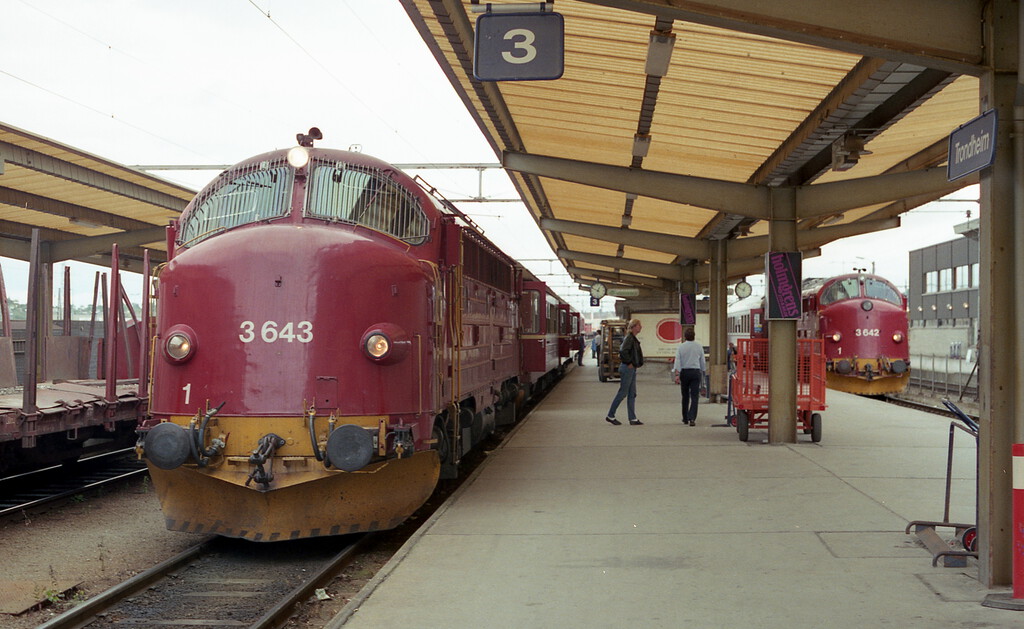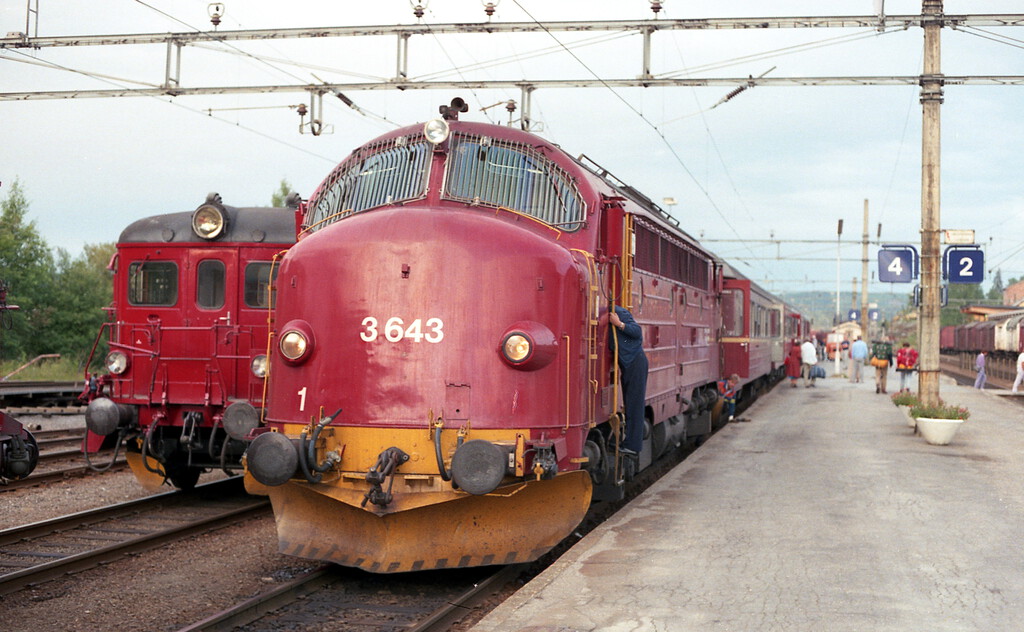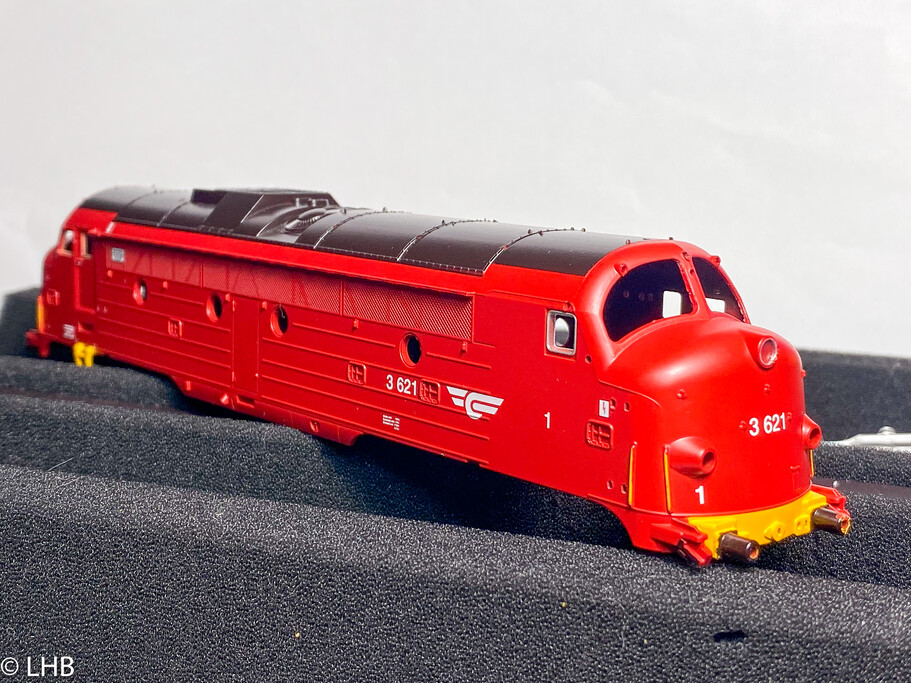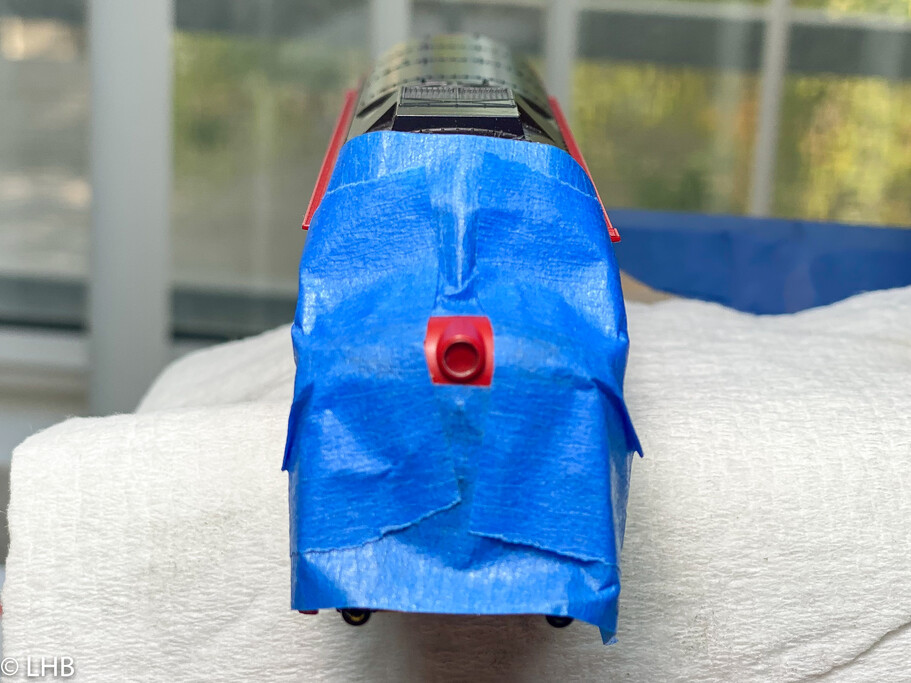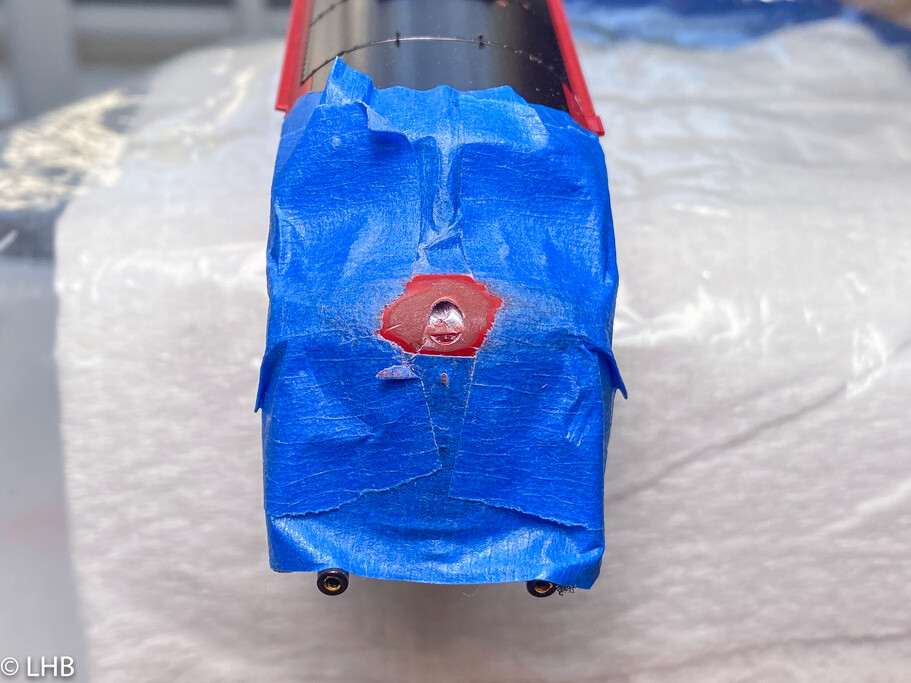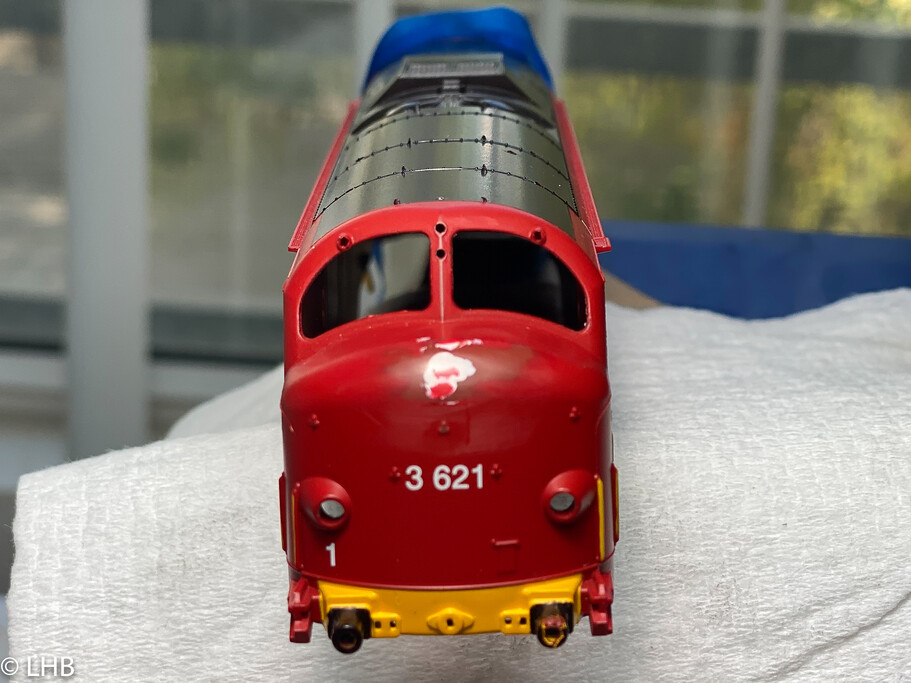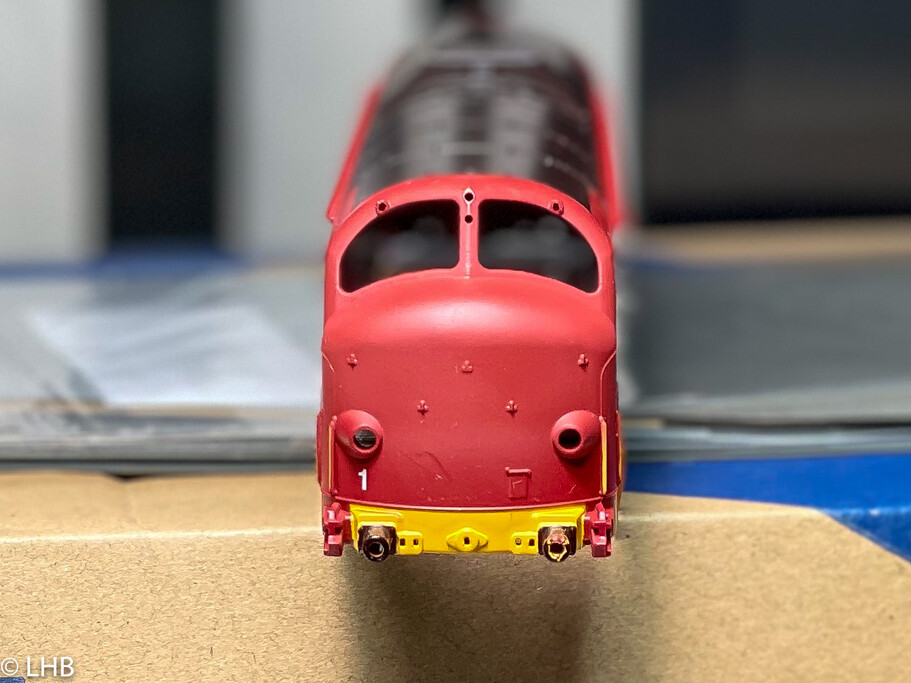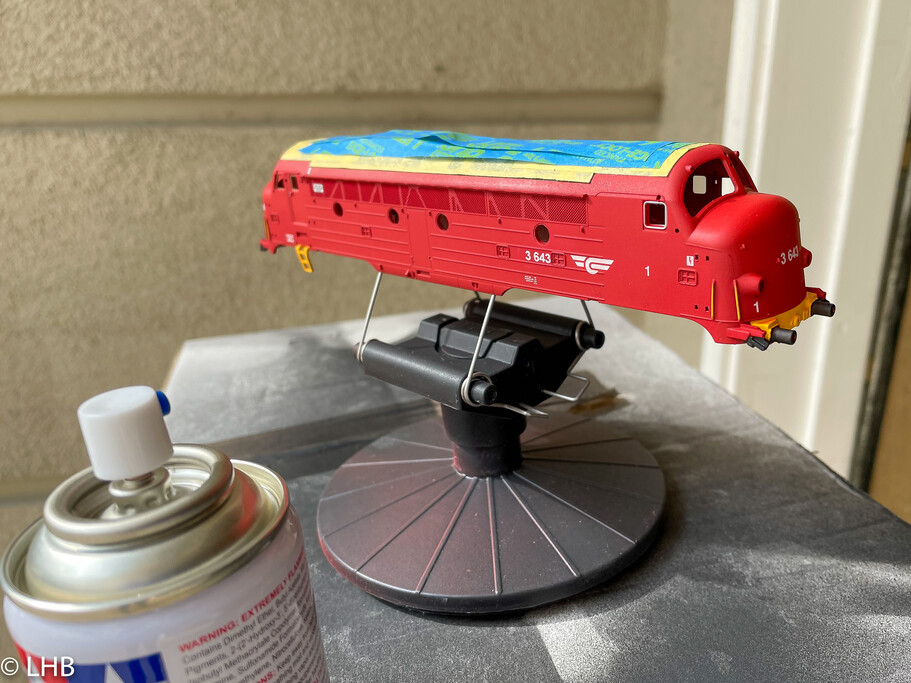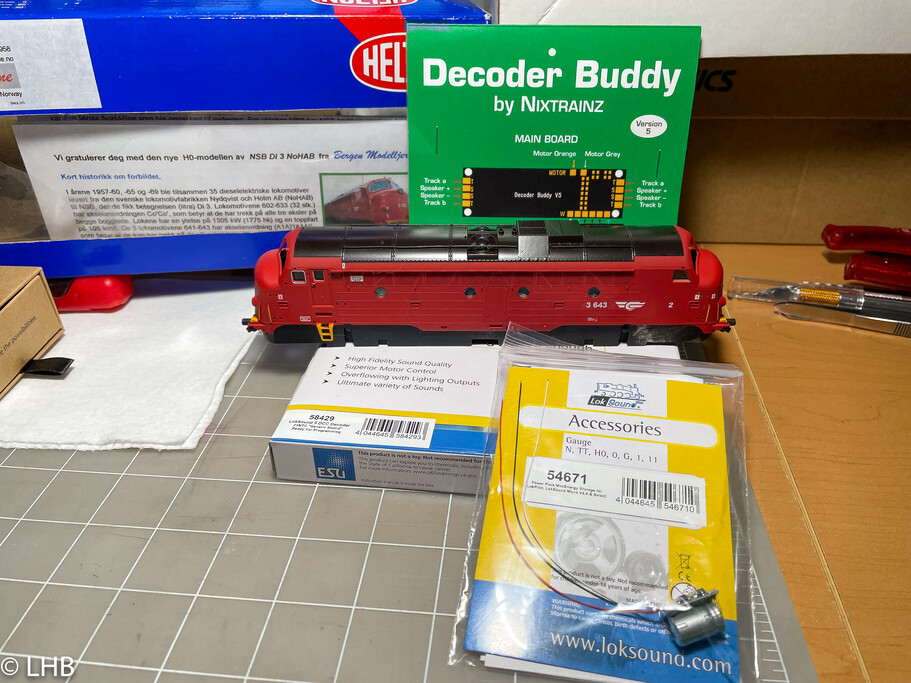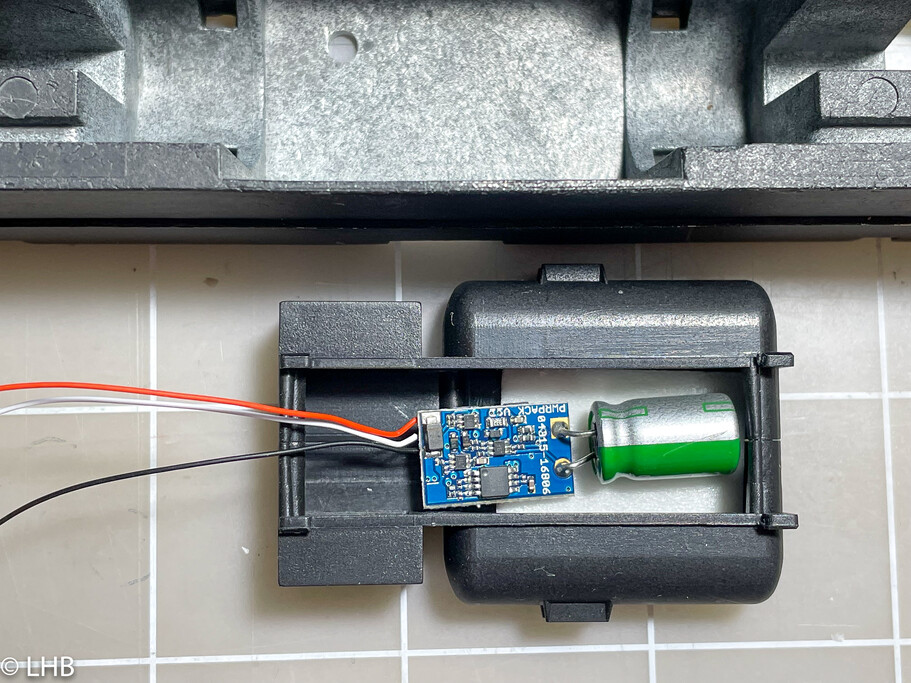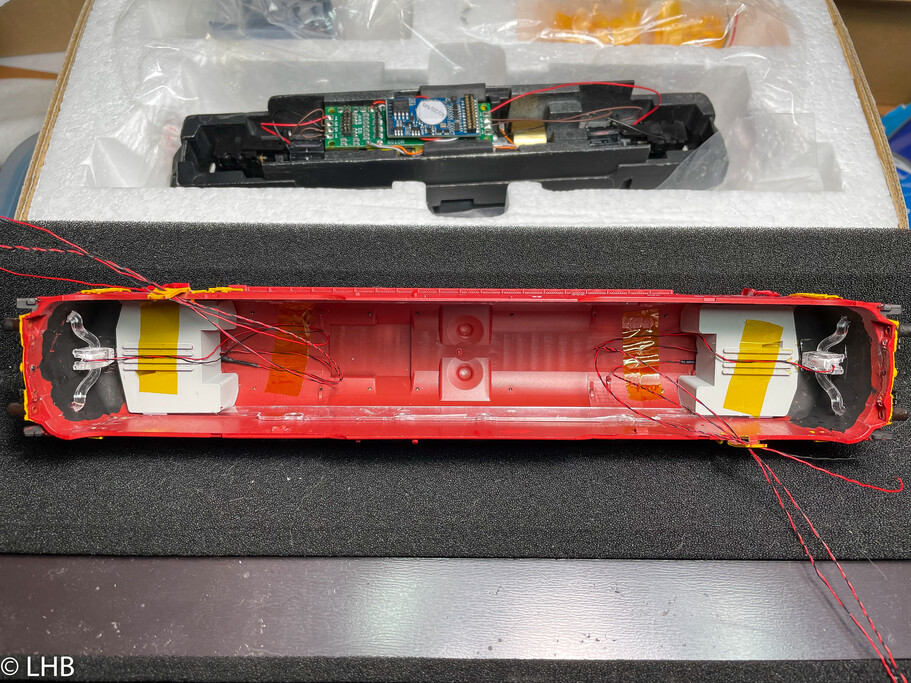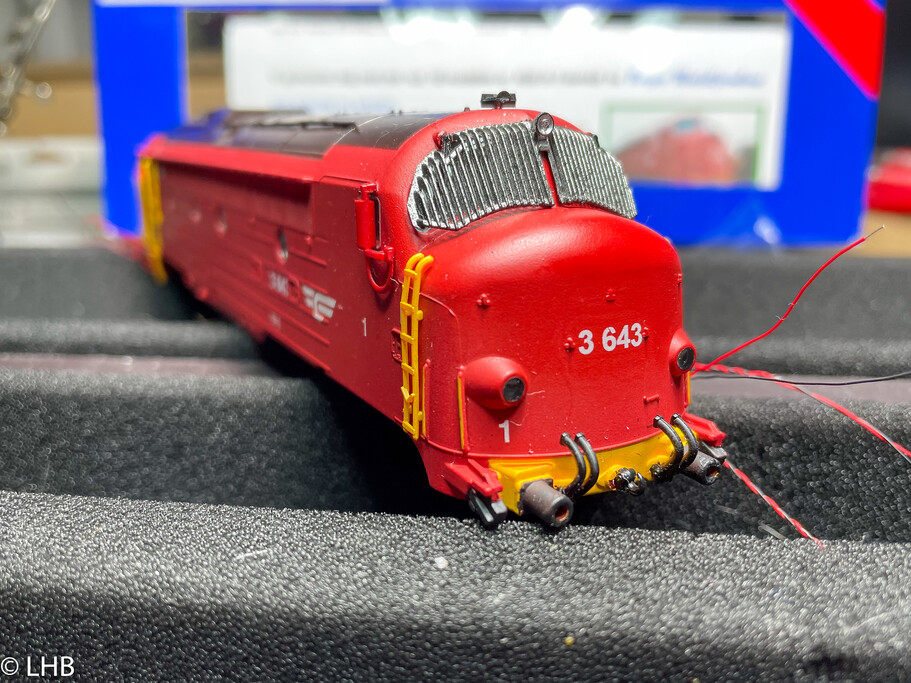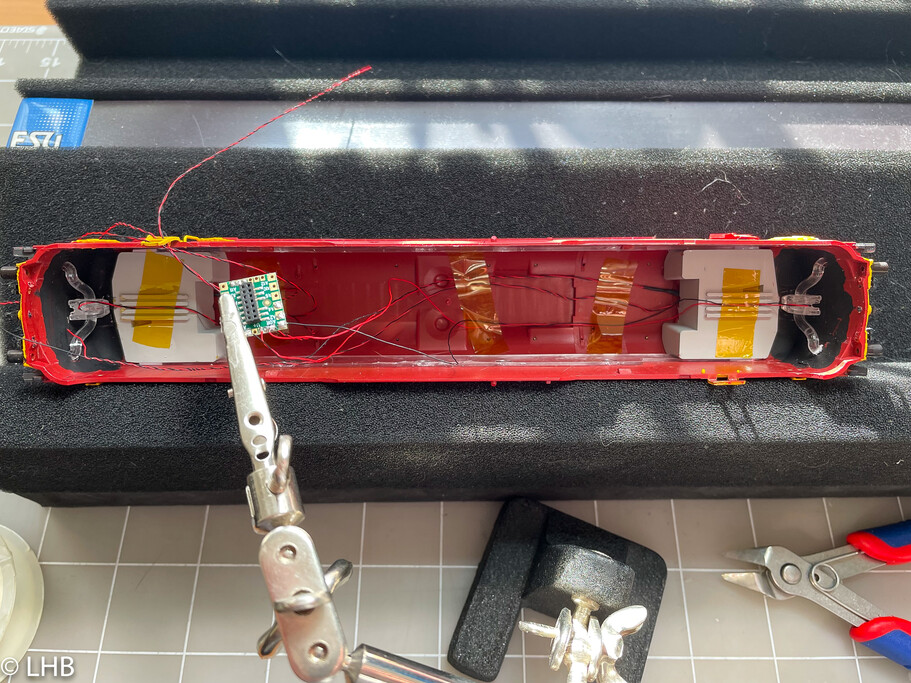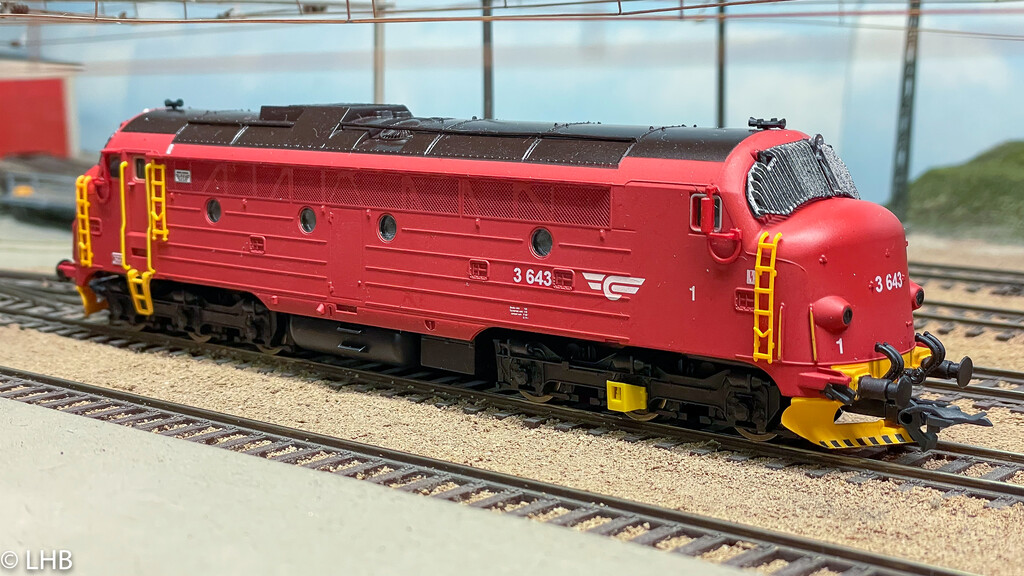Introduction
As the late 1980's is my favorite era I was very interested in getting a model of the Di3.643 in ny design without the nose light. I already have a 1990's model of the Di3.643, as that was provided by Bergen Modelljernbane based on a Heljan model.
A good starting point for a Di3.643 is the Heljan model again, as that is a model of the long Di3 (the 602, 622, 623 and 641-643 were longer than the other models). I was able to get a model of the original Heljan/BMJ Di3.621 and thas was the starting point of this project.
Removal of the nose light and renumbering into Di3.643
DCC Sound install
The original PCB is not going to be used, a Nixtrainz decoder buddy is used instead. This board is much smaller than the original PCB. The main reasons for using the decoder buddy are: built-in resistors for LED lights and connections for the 3-wire power pack. I installed two ESU sugar cube speakers.
6 LEDs are used for lights. The top-light is made with a separate SMD led. Cab lights are made by glueing a small LED to the back of the interior cab insert. Then all the wires are hooked up to the decoder buddy connector. This allows for removing the shell in the future. All the various outputs are clearly marked on the connector board which makes for an easy hookup.
